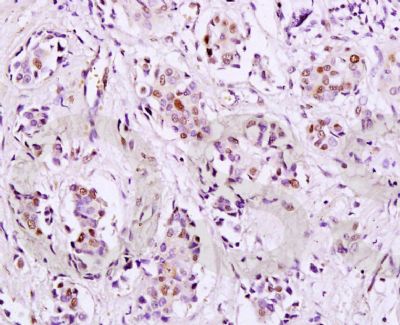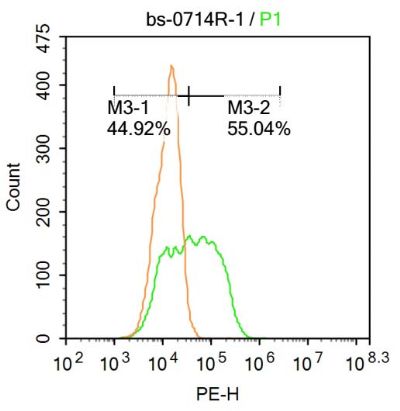Human papilloma viruses (HPVs) can be classified as either high risk or low risk according to their association with cancer. HPV16 and HPV18 are the most common of the high risk group while HPV6 and HPV11 are among the low risk types. Approximately 90% of cervical cancers contain HPV DNA of the high risk types. Mutational analysis have shown that the E6 and E7 genes of the high risk HPVs are necessary and sufficient for HPV transforming function. The specific interactions of the E6 and E7 proteins with p53 and pRB, respectively, correlate with HPV high and low risk classifications. The high risk HPV E7 proteins bind to pRB with a higher affinity than do the low risk HPV proteins, and only the high risk HPV E6 proteins form detectable complexes with p53 in vitro.
Function:
E7 protein has both transforming and trans-activating activities. Disrupts the function of host retinoblastoma protein RB1/pRb, which is a key regulator of the cell cycle. Induces the disassembly of the E2F1 transcription factors from RB1, with subsequent transcriptional activation of E2F1-regulated S-phase genes. Inactivation of the ability of RB1 to arrest the cell cycle is critical for cellular transformation, uncontrolled cellular growth and proliferation induced by viral infection. Stimulation of progression from G1 to S phase allows the virus to efficiently use the cellular DNA replicating machinery to achieve viral genome replication. Interferes with histone deacetylation mediated by HDAC1 and HDAC2, leading to activation of transcription.
Subunit:
Homodimer. Homooligomer. Interaction with host RB1 induces the aberrant dissociation of RB1-E2F1 complex thereby disrupting RB1's activity. Binds to CHD3 through its zinc-finger domain. Forms a complex with CHD3 and HDAC1, thereby altering the action of host histone deacetylation. A similar complex involving E7, CHD3 and HDAC2 might also form. Interacts with E2; this interaction inhibits E7 oncogenic activity.
Similarity:
Belongs to the papillomaviridae E7 protein family.
SWISS:
P03129
Gene ID:
1489079
Database links:
Entrez Gene: 1489079 HPV16
SwissProt: P03129 HPV16
E7/E6protein抗体主要用于性病及妇科肿瘤方面的研究,HPV16是宫颈癌的主要致癌病毒,也用于与HPV有关的各种肿瘤的研究。表达位置:胞核。阳性细胞也可见于角蛋白层,尤其是在疣中。该抗体用于人类生殖系统传染性疾病及其肿瘤的研究,亦可用于食管癌、乳腺癌等恶性肿瘤的研究。
| Picture |
Tissue/cell: human breast cancer; 4% Paraformaldehyde-fixed and paraffin-embedded;
Antigen retrieval: citrate buffer ( 0.01M, pH 6.0 ), Boiling bathing for 15min; Block endogenous peroxidase by 3% Hydrogen peroxide for 30min; Blocking buffer (normal goat serum,SLC0005) at 37℃ for 20 min;
Incubation: Anti-HPV16-E7 Polyclonal Antibody, Unconjugated(SL0714R) 1:200, overnight at 4°C, followed by conjugation to the secondary antibody(SP-0023) and DAB(SLC0010) staining
Blank control: Hela.
Primary Antibody (green line): Rabbit Anti-HPV16 E7 antibody (SL0714R)
Dilution: 1μg /10^6 cells;
Isotype Control Antibody (orange line): Rabbit IgG .
Secondary Antibody : Goat anti-rabbit IgG-PE
Dilution: 1μg /test.
Protocol
The cells were fixed with 4% PFA (10min at room temperature)and then permeabilized with 90% ice-cold methanol for 20 min at-20℃. The cells were then incubated in 5%BSA to block non-specific protein-protein interactions for 30 min at at room temperature .Cells stained with Primary Antibody for 30 min at room temperature. The secondary antibody used for 40 min at room temperature. Acquisition of 20,000 events was performed.
|
|
|

